UC Blogs
'Food stamps' can't be blamed for the obesity crisis
Members of families that receive benefits from the U.S. Supplemental Nutrition Assistance Program (formerly known as food stamps) are more likely to be overweight or obese than people in families that don't receive the federal food assistance, according to a UC Davis study cited by ABC News. However, the research doesn't say its the food assistance that is making them fat.
The argument that excluding "unhealthy" items - like candy, soda and chips - from the supplemental nutrition program would make participants healthier "is not a lay-down hand at all," said Julian Alston, professor in the Department of Agricultural and Resource Economics at UC Davis.
"You can restrict how people spend their stamps but not change their total consumption," he said. Also, manufacturers will tweak their products to try to get around the prohibition. "They will re-engineer the food," Alston said.

Limiting 'food stamp' purchases to healthful items won't make participants healthier.
Local Olives
Admittedly, this blog entry leans more towards food than cultivation, but hey, isn’t food one of the main reasons why we grow edibles in addition to edibles just being plain beautiful?? I believe our local readers will be delighted to know that we have a number of knowledgeable local olive growers, and, in turn, olive oil producers here in Solano County. This blog entry will feature one such local source—Il Fiorello Olive Oil Company located at 2625 Mankas Corner in Suisun Valley.
Il Fiorello (Italian for “little flower,” which describes the olive flower itself) is owned by Mark and Ann Sievers. I had the pleasure and privilege of attending a marvelous Chocolate and Olive Oil tasting event at Il Fiorello recently. This blog entry will focus exclusively on the olive aspect of the event (rather than chocolate), as olives can be cultivated locally.
During the event, Mark gave an informative lecture, filled with fun facts about olives:
- Most Olives are grown within 200 miles of the Mediterranean Sea.
- There are over 800 varieties of olives.
- Different olives produce different flavored olive oils.
- Greeks use more olive oil than just about anyone.
- There are approximately 800 olive mills in Sicily alone; contrast that with just 53 mills in the United States.
- California is the center for the olive oil industry in the United States.
- Oldest olive tree is in Sicily—approximately 2,600 years old.
Mark explained that when tasting olive oil, you should first use your nose to smell the oil and then taste for depth (fruitiness/bitterness, pungency (e.g., how peppery is it?), and balance). Pungency can be described by the number of coughs you experience as a result of tasting an oil. One of the many varieties of olives that the Sievers grow, is called a Lecchino, which is delicate in flavor and pairs well with vegetables such as spinach. Another variety that the Sievers grow is the Frantoio, which produces a more robust olive oil.
When caring for olive trees, Mark advised that one must be very careful to prune the trees because olives grow on 1-year old wood. Apparently, olive trees are fairly pest-resistant overall, having only one real pest—the olive fly (http://ipm.ucdavis.edu/PMG/PESTNOTES/pn74112.html ) which, according to Mark, is pretty easy to control. One healthy tree can produce approximately 40 pounds of olives which will render 2 quarts of olive oil. Mark said that olives start to deteriorate the moment they are harvested (helpful tip for those of you who have olive trees and harvest from them). Olives must be milled within 24 hours of harvest to achieve a superior oil.
Mark advised that olive oil, if kept properly (no heat, no light, no oxygen) in a cool, dark place, will last up to 3 years. He warned that most of the olive oil on supermarket shelves is rancid (I heard the same when attending an olive workshop presented at UC Davis this year) and that the only way a consumer knows to tell the difference, is to have developed a palate for good olive oil.
So if you love olives but do not have your own olive trees, look no further than to our local sources.
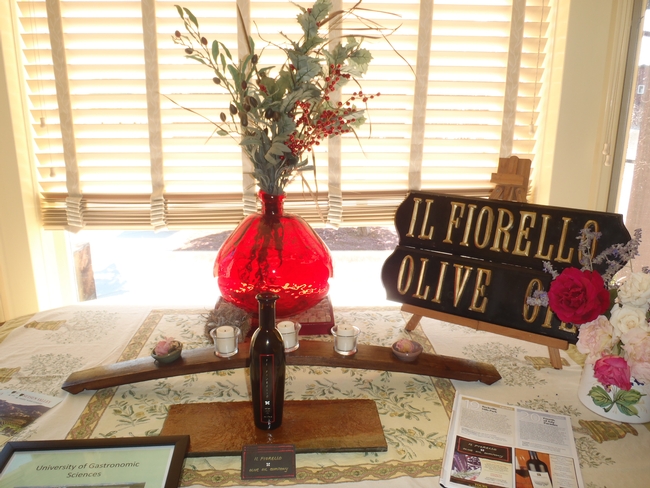
Photos by Betty Homer

P9021284
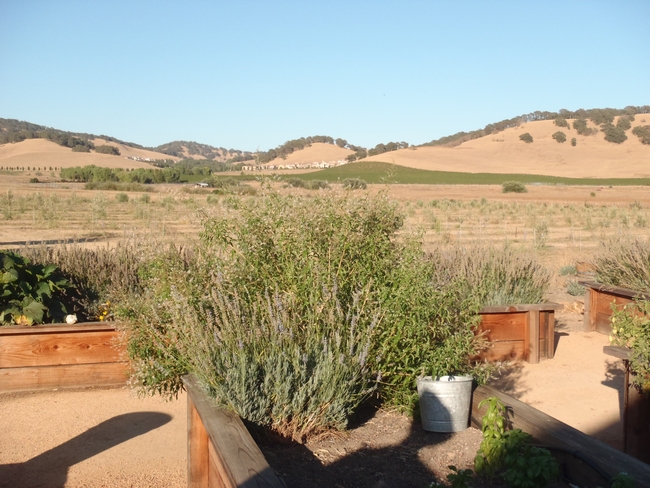
P9021287
Behold the White-Lined Sphinx Moth
Our cat used to catch them. She'd bring them into the house and watch them flutter at our feet. The white-lined sphinx moth (Hyles...
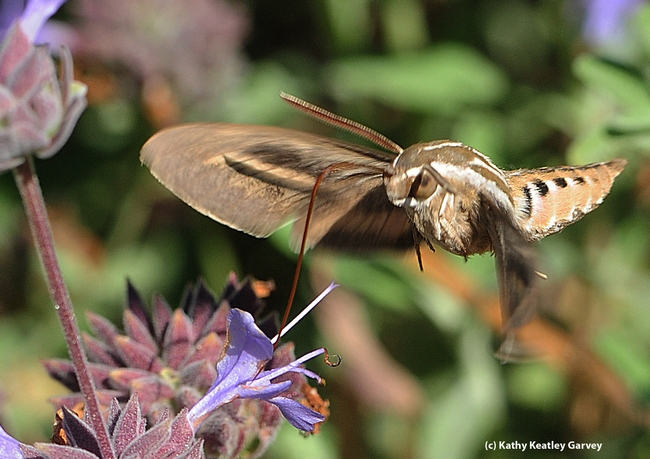
White-lined sphinx moth in flight. (Photo by Kathy Keatley Garvey)
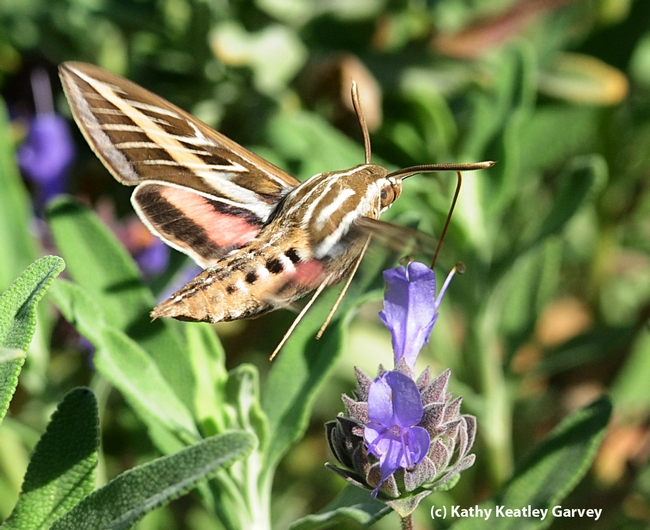
White-lined sphinx moth heads for salvia (sage). (Photo by Kathy Keatley Garvey)
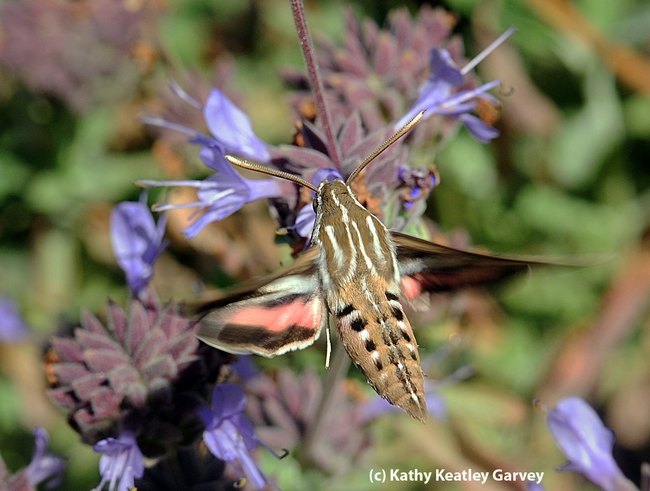
View from above of the white-lined sphinx moth. (Photo by Kathy Keatley Garvey)
Dazzling Dahlias
Dahlias just amaze me with the dazzling colors and masses of flowers they produce. My first dahlia was a gift from a school colleague, who shared her tuberous roots with me. Year after year it pops up in late May and grows and grows until it starts flowering in late summer. Then the show is on from summer through fall.
This summer, I attended the San Francisco Dahlia Society show in Golden Gate Park and found a whole new world of flowers. The blooms can range from under 2 inches (mignon) to over 10 inches (giant). The American Dahlia Society classifies the plants by flower form such as ray florets. One of the many forms I learned about was the Laciniated Single. Each ray of this bloom curls and splits at the tip giving a fringed appearance. Another unusual form was the Incurved Cactus that rolls downward with pointed tips.
The San Francisco Dahlia Society’s web site, http://www.sfdahlia.org , has five simple steps in growing dahlias in the Bay Area. I will certainly start with their first step by attending their annual sale next year, held the first Saturday in April at the Hall of Flowers in Golden Gate Park. If a friend shares their dahlias, step 2 is planting, done from April to June. Check the website for soil tips, staking, thinning, and pests.
When you pick your flowers do it early in the morning or in the evening. Immediately place cut stems in 2-3 inches of hot water letting them stand in the gradually cooling water for several hours or overnight. The cut flowers will last for several days. You will be very satisfied with the results of these tuberous roots.
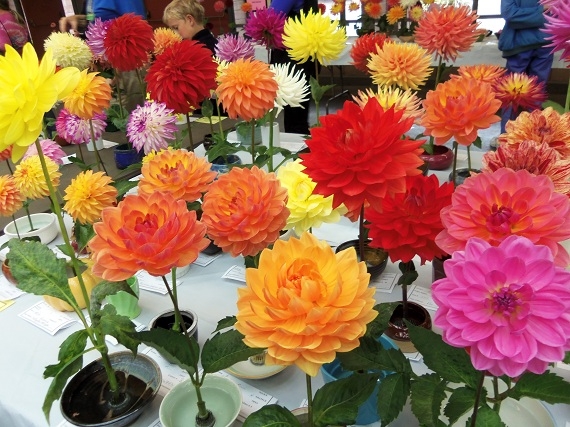
Waterlily form. (photos by Karen Norton)
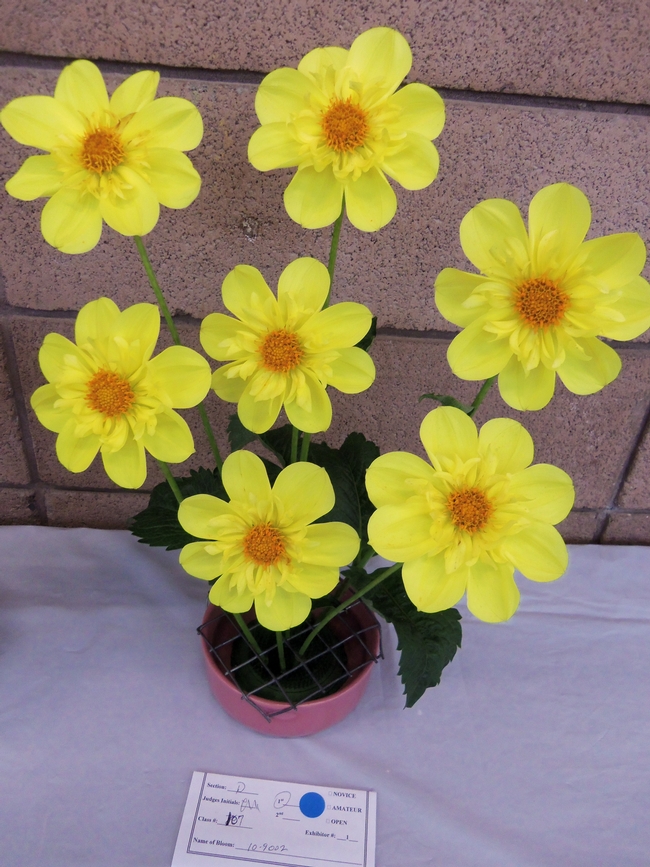
Single form.
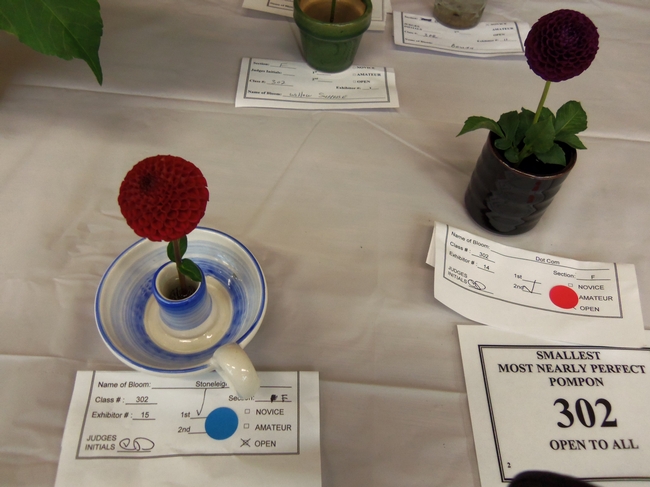
Pompon form.
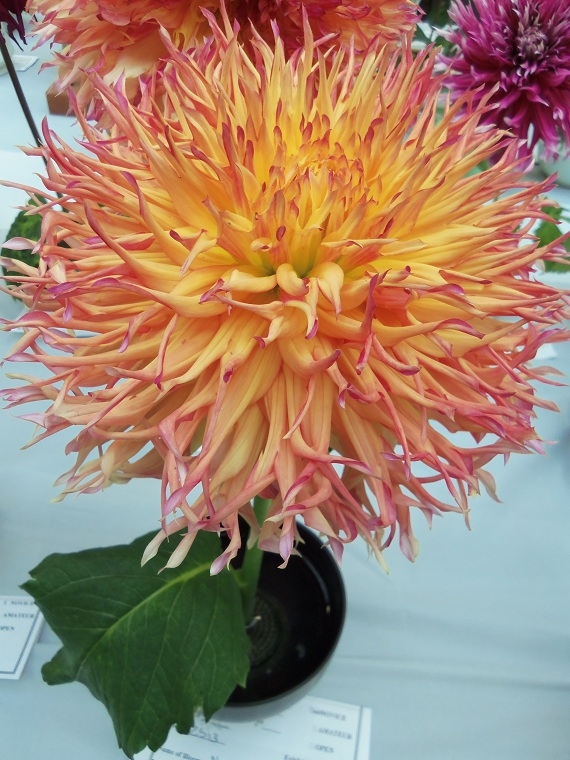
Lacinated form.
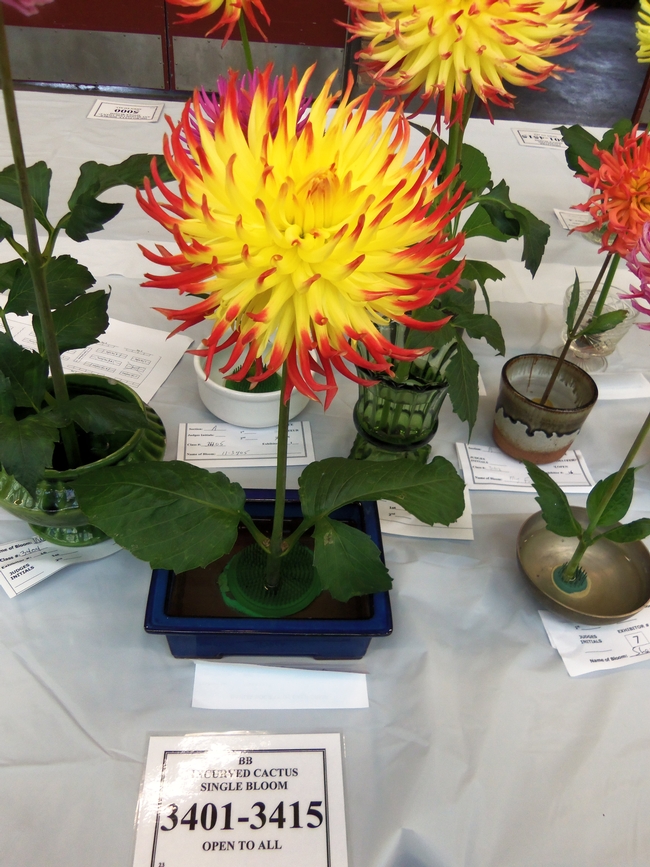
Cactus form.
Seeing Red
It's easily missed because it's only a fraction of an inch long. But the color--a brilliant red--is right there. It's a little difficult to see on a...
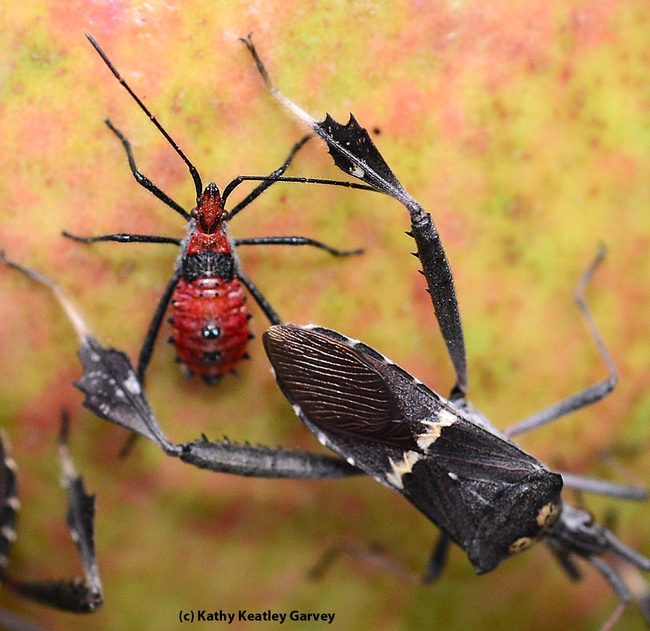
Red nymph of leaffooted bug, Leptoglossus zonatus. (Photo by Kathy Keatley Garvey)
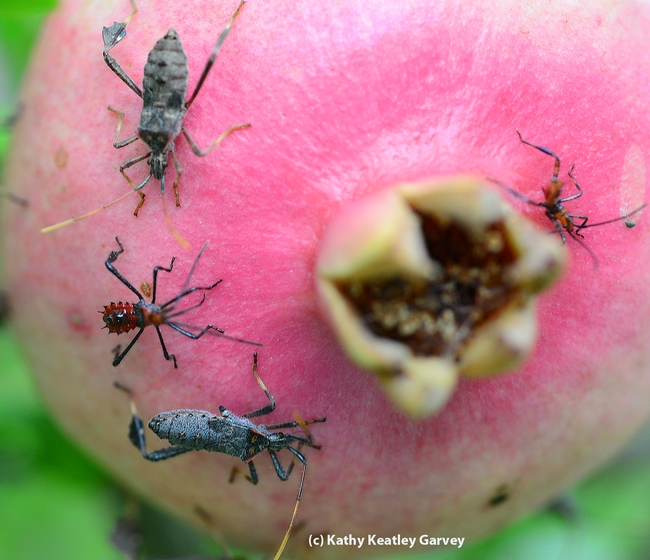
Leaffooted bugs, adults and nymphs, share a pomegranate. (Photo by Kathy Keatley Garvey)

